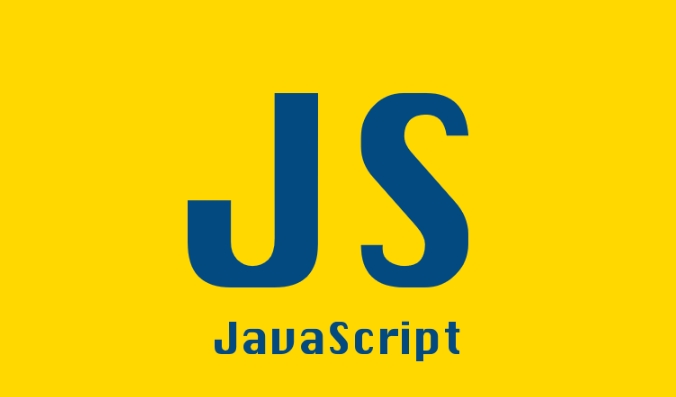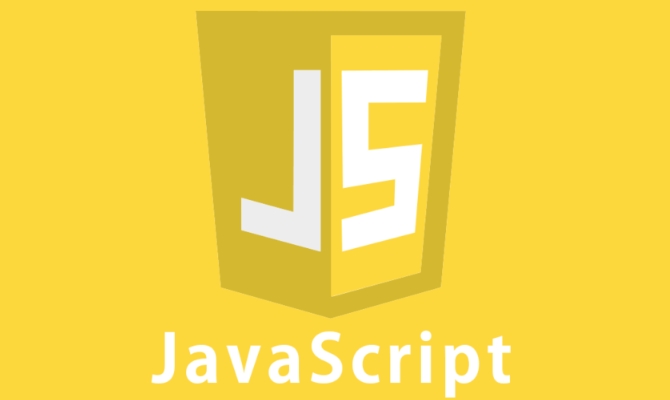Install TypeScript and configure tsconfig.json, enable allowJs to support mixed JavaScript and TypeScript files; 2. Start with orphan modules such as tool functions, gradually rename the .js file to .ts and fix type errors. You can first use JSDoc to improve type inference; 3. Gradually enable strict check rules in strict mode, solve problems such as noImplicitAny and strictNullChecks one by one to avoid abuse of @ts-ignore; 4. Install the @types package for third-party libraries, create declaration files in the types directory when types are missing and configure typeRoots; 5. Integrate tsc into the construction process, set up type-check scripts and run them in CI to prevent type degradation; 6. Add interface or type definition during refactoring, replace any with specific types, and maintain incremental improvements; 7. The team introduced ESLint and TypeScript integration, configuration editor support, and shared type definition mode. The key to migration is to gradually advance rather than rewrite, and to achieve type safety through small-step iteration. Even some adoption can effectively reduce production environment bugs. The ultimate goal is to continuously improve type coverage without interrupting existing functions.

Migrating a JavaScript project to TypeScript isn't about rewriting everything overnight—it's about incrementally adding type safety while keeping your code functional. Here's how to do it step by step, without breaking your app or team workflow.

1. Set Up TypeScript in Your Project
Start by installing TypeScript and setting up the configuration file.
npm install typescript --save-dev npm install @types/node --save-dev # Common types, adjust as needed
Create a tsconfig.json file to define how TypeScript should behave:

{
"compilerOptions": {
"target": "ES2020",
"module": "commonjs",
"allowJs": true,
"outDir": "./dist",
"rootDir": "./src",
"strict": true,
"esModuleInterop": true,
"skipLibCheck": true,
"forceConsistentCasingInFileNames": true
},
"include": ["src/**/*"]
}Key options:
-
"allowJs": true– lets you keep.jsfiles while gradually adding.ts. -
"strict": true– enables strict type checking (recommended for new conversions). -
"outDir"and"rootDir"– keep your compiled output organized.
You can generate this file interactively:

npx tsc --init
2. Start with Smaller, Isolated Files
Don't try to convert your entire codebase at once. Begin with:
- Utility functions
- Helper modules
- Pure components (in React/Vue apps)
Rename a .js file to .ts (or .tsx if using React with JSX), then run:
npx tsc --noEmit
This checks types without generating output. Fix any errors that appear.
? Pro tip: Use JSDoc comments in
.jsfiles first to get better type inference. TypeScript can understand types like:/** * @param {string} name * @returns {number} */ function getNameLength(name) { return name.length; }This helps during the transition and improves autocomplete.
3. Gradually Enforce Type Safety
Once TypeScript is running, increase the strictness over time.
Update tsconfig.json to catch more issues:
"noImplicitAny": true, "strictNullChecks": true, "noImplicitReturns": true, "noFallthroughCasesInSwitch": true
Fix one rule at a time. For example:
- Start with
noImplicitAny→ add types where they're missing. - Then enable
strictNullChecks→ handlenull/undefinedcases.
Use // @ts-ignore sparingly—and always add a comment explaining why:
// @ts-ignore: Temporary ignore until API response is typed const data = response.data.users;
Better yet, use // @ts-expect-error if you plan to fix it later.
4. Handle Third-Party Libraries
Many npm packages have built-in TypeScript support or community-maintained types.
Install types when available:
npm install @types/react @types/express @types/lodash --save-dev
If types don't exist:
- Create a shim in
types/folder:// types/my-library.d.ts declare module 'my-library' { const value: any; export default value; } - Reference it in
tsconfig.json:"typeRoots": ["node_modules/@types", "types"]
5. Integrate with Your Build Tool
Update your build scripts to run TypeScript.
For example, in package.json :
"scripts": {
"build": "tsc",
"dev": "tsc --watch"
} If you're using Babel (eg, in Create React App), you can let Babel handle TypeScript (but you still need tsc --noEmit for type checking in CI).
Add a type-checking script:
"scripts": {
"type-check": "tsc --noEmit",
"type-check:watch": "tsc --noEmit --watch"
}Run it in your CI pipeline to prevent type regressions.
6. Refactor Step by Step
As you convert files:
- Rename
.js→.ts - Add interfaces for object shapes
- Replace
anywith specific types when possible
Example:
// Before (in .js with JSDoc or implicit any)
function createUser(user) {
return { id: 1, ...user };
}
// After
interface User {
name: string;
email: string;
}
function createUser(user: User): User & { id: number } {
return { id: 1, ...user };
} Use interface or type based on preference:
-
interfaceis extendable and good for object shapes. -
typeis more flexible (unions, primitives, etc.).
7. Train Your Team and Update Tooling
- Add TypeScript linting with ESLint:
npm install eslint @typescript-eslint/parser @typescript-eslint/eslint-plugin --save-dev
- Configure
.eslintrcto support TypeScript syntax and best practices. - Set up editor support (VS Code works great out of the box).
- Share common patterns in your team (eg, how to type React props, Redux actions, etc.).
- Start small
- Keep the app running
- Incrementally improve type coverage
- Use tooling to catch errors early
Final Thoughts
TypeScript migration is a journey—not a one-time event. The key is:
You don't need 100% TypeScript to benefit from 20% adoption. Even partial typing catches bugs before they reach production.
Basically, just get started—and keep moving forward.
The above is the detailed content of Migrating a JavaScript Project to TypeScript: A Step-by-Step Guide. For more information, please follow other related articles on the PHP Chinese website!

Hot AI Tools

Undress AI Tool
Undress images for free

Undresser.AI Undress
AI-powered app for creating realistic nude photos

AI Clothes Remover
Online AI tool for removing clothes from photos.

Clothoff.io
AI clothes remover

Video Face Swap
Swap faces in any video effortlessly with our completely free AI face swap tool!

Hot Article

Hot Tools

Notepad++7.3.1
Easy-to-use and free code editor

SublimeText3 Chinese version
Chinese version, very easy to use

Zend Studio 13.0.1
Powerful PHP integrated development environment

Dreamweaver CS6
Visual web development tools

SublimeText3 Mac version
God-level code editing software (SublimeText3)

Hot Topics
 Why should you place tags at the bottom of the ?
Jul 02, 2025 am 01:22 AM
Why should you place tags at the bottom of the ?
Jul 02, 2025 am 01:22 AM
PlacingtagsatthebottomofablogpostorwebpageservespracticalpurposesforSEO,userexperience,anddesign.1.IthelpswithSEObyallowingsearchenginestoaccesskeyword-relevanttagswithoutclutteringthemaincontent.2.Itimprovesuserexperiencebykeepingthefocusonthearticl
 What is event bubbling and capturing in the DOM?
Jul 02, 2025 am 01:19 AM
What is event bubbling and capturing in the DOM?
Jul 02, 2025 am 01:19 AM
Event capture and bubble are two stages of event propagation in DOM. Capture is from the top layer to the target element, and bubble is from the target element to the top layer. 1. Event capture is implemented by setting the useCapture parameter of addEventListener to true; 2. Event bubble is the default behavior, useCapture is set to false or omitted; 3. Event propagation can be used to prevent event propagation; 4. Event bubbling supports event delegation to improve dynamic content processing efficiency; 5. Capture can be used to intercept events in advance, such as logging or error processing. Understanding these two phases helps to accurately control the timing and how JavaScript responds to user operations.
 A definitive JS roundup on JavaScript modules: ES Modules vs CommonJS
Jul 02, 2025 am 01:28 AM
A definitive JS roundup on JavaScript modules: ES Modules vs CommonJS
Jul 02, 2025 am 01:28 AM
The main difference between ES module and CommonJS is the loading method and usage scenario. 1.CommonJS is synchronously loaded, suitable for Node.js server-side environment; 2.ES module is asynchronously loaded, suitable for network environments such as browsers; 3. Syntax, ES module uses import/export and must be located in the top-level scope, while CommonJS uses require/module.exports, which can be called dynamically at runtime; 4.CommonJS is widely used in old versions of Node.js and libraries that rely on it such as Express, while ES modules are suitable for modern front-end frameworks and Node.jsv14; 5. Although it can be mixed, it can easily cause problems.
 How does garbage collection work in JavaScript?
Jul 04, 2025 am 12:42 AM
How does garbage collection work in JavaScript?
Jul 04, 2025 am 12:42 AM
JavaScript's garbage collection mechanism automatically manages memory through a tag-clearing algorithm to reduce the risk of memory leakage. The engine traverses and marks the active object from the root object, and unmarked is treated as garbage and cleared. For example, when the object is no longer referenced (such as setting the variable to null), it will be released in the next round of recycling. Common causes of memory leaks include: ① Uncleared timers or event listeners; ② References to external variables in closures; ③ Global variables continue to hold a large amount of data. The V8 engine optimizes recycling efficiency through strategies such as generational recycling, incremental marking, parallel/concurrent recycling, and reduces the main thread blocking time. During development, unnecessary global references should be avoided and object associations should be promptly decorated to improve performance and stability.
 How to make an HTTP request in Node.js?
Jul 13, 2025 am 02:18 AM
How to make an HTTP request in Node.js?
Jul 13, 2025 am 02:18 AM
There are three common ways to initiate HTTP requests in Node.js: use built-in modules, axios, and node-fetch. 1. Use the built-in http/https module without dependencies, which is suitable for basic scenarios, but requires manual processing of data stitching and error monitoring, such as using https.get() to obtain data or send POST requests through .write(); 2.axios is a third-party library based on Promise. It has concise syntax and powerful functions, supports async/await, automatic JSON conversion, interceptor, etc. It is recommended to simplify asynchronous request operations; 3.node-fetch provides a style similar to browser fetch, based on Promise and simple syntax
 var vs let vs const: a quick JS roundup explainer
Jul 02, 2025 am 01:18 AM
var vs let vs const: a quick JS roundup explainer
Jul 02, 2025 am 01:18 AM
The difference between var, let and const is scope, promotion and repeated declarations. 1.var is the function scope, with variable promotion, allowing repeated declarations; 2.let is the block-level scope, with temporary dead zones, and repeated declarations are not allowed; 3.const is also the block-level scope, and must be assigned immediately, and cannot be reassigned, but the internal value of the reference type can be modified. Use const first, use let when changing variables, and avoid using var.
 JavaScript Data Types: Primitive vs Reference
Jul 13, 2025 am 02:43 AM
JavaScript Data Types: Primitive vs Reference
Jul 13, 2025 am 02:43 AM
JavaScript data types are divided into primitive types and reference types. Primitive types include string, number, boolean, null, undefined, and symbol. The values are immutable and copies are copied when assigning values, so they do not affect each other; reference types such as objects, arrays and functions store memory addresses, and variables pointing to the same object will affect each other. Typeof and instanceof can be used to determine types, but pay attention to the historical issues of typeofnull. Understanding these two types of differences can help write more stable and reliable code.
 How to traverse the DOM tree (e.g., parentNode, children, nextElementSibling)?
Jul 02, 2025 am 12:39 AM
How to traverse the DOM tree (e.g., parentNode, children, nextElementSibling)?
Jul 02, 2025 am 12:39 AM
DOM traversal is the basis of web page element operation. Common methods include: 1. Use parentNode to obtain the parent node, and can be chained to find it upward; 2. children return a collection of child elements, accessing the first or end child elements through the index; 3. nextElementSibling obtains the next sibling element, and combines previousElementSibling to realize the same-level navigation. Practical applications such as dynamically modifying structures, interactive effects, etc., such as clicking the button to highlight the next brother node. After mastering these methods, complex operations can be achieved through combination.






